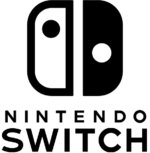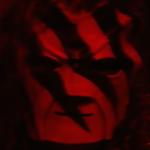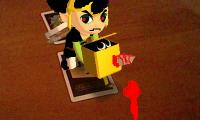Interesting article, it is two pages, please visit the link and read entirely. I have quoted some highlights below:
Wii U Was A Better Console For Third-Party Games
http://www.forbes.co...rd-party-games/
Last year I played Assassin’s Creed IV: Black Flag on Wii U. I hadn’t liked any of the earlier games in the series but it was new, and in the world of videogames newness is easily confused for worth, creating its own micro-culture of consumer cartographers attempting to divine their way between through the two collapsed poles. Expecting little from Black Flag, and having been preconditioned to expect even less from Nintendo ’s underpowered gimmick console, I was surprised to discover how much the touchscreen controller added to my experience, something I found myself missing while playing this year’s Assassin’s Creed: Unity.
Assassin’s Creed games are automated swamps of semi-interactivity. Playing them is like riding on a drunken horse and thinking you’re in control of the situation. They’re organized as a massive quest of sprinting toward indistinguishable objects across the play space, a process that requires a continuous effort to relate the abstracted overhead map to the three-dimensional environments you move through, with the convenient augmented reality effect of magically hovering icons inserted into the game world air after having been selected on the map. Much of the game is built around routes of efficiency, differentiating icons that can be collected along the way from those—like Assassin’s missions—so time consuming they’d interrupt efficient collecting of every other icon.
The Wii U’s controller combines these two different dimensions of play into an interface that provides simultaneous accessibility for each. Like motion control before it, the Wii U controller is an obvious idea that ends up being audacious in execution, proposing an alternate way of thinking about game space and play design in a generation that has become increasingly rote and self-reflexive. It took a few hours of playing Black Flag on Wii U before I noticed I was actually playing it differently than other games in the series. With a larger map available on the touchscreen, the drive of the game became almost entirely architectural, reconciling the topographical data on the map screen with the pseudo-natural geometry of the game world, constantly trying to see in its bent palm trees and colonial outposts some object of importance calling out from the alternate dimension on the touchscreen.
Increasing the amount of visual detail in games is the most conservative of all approaches to generational shift, one that takes existing development paradigms and gives them more memory and computational power to decorate their paradigmatic decay. Producing more of what already is has become the de facto measurement of newness in videogame culture, making the superficiality of familiar ideas incrementally more plausible, until a point of numbness is reached, novelty having diluted itself to the point of being unidentifiable within a mass of hyper-animated information.
Playing games that have extended the design patterns of the last generation on Wii U—Batman: Arkham Origins, Call of Duty: Ghosts, Mass Effect 3, FIFA, Splinter Cell: Blacklist—there is a palpable sense of an era having designed itself into a corner. The addition of a second screen integrated into the controller does indeed feel like gimmickry, but its gimmickry that reveals the thoughtlessly repeated design ideas of the games themselves more than the controller and its touchscreen. Gimmickry is the heart of play, the redirection of something toward a purpose that’s not immediately obvious to produce a sense of discovery and surprise. What’s often described as depth in play is only just a proliferation of branching gimmicks, each leading to a variety of roughly equivalent automations, the choice between which conveys a kind of intimate fragment of personhood to some other player familiar with the sleight-of-hand bylaws and what passes for alternatives to them.
Even when used as just a map screen, the Wii U’s controller points to a dimensional complexity in play that’s absent in the more computationally powerful PS4 and Xbox One. Playing half-hearted ports with minimal investment in the new play apparatus, there is a greater sense of possibility and strangeness than anything I’ve felt from higher screen resolution, more non-playable characters, or more elaborate physics simulations. But since most third-party developers have abandoned Nintendo’s small gesture toward a new kind of thinking about play, whatever advancement their machinery could have led to will remain a theoretical abstraction.





















